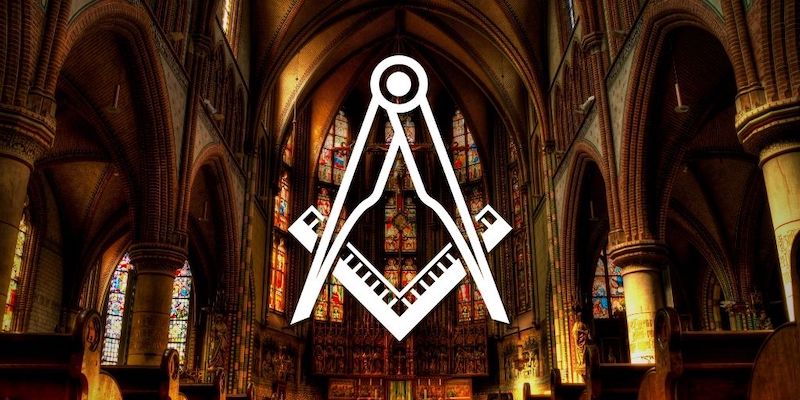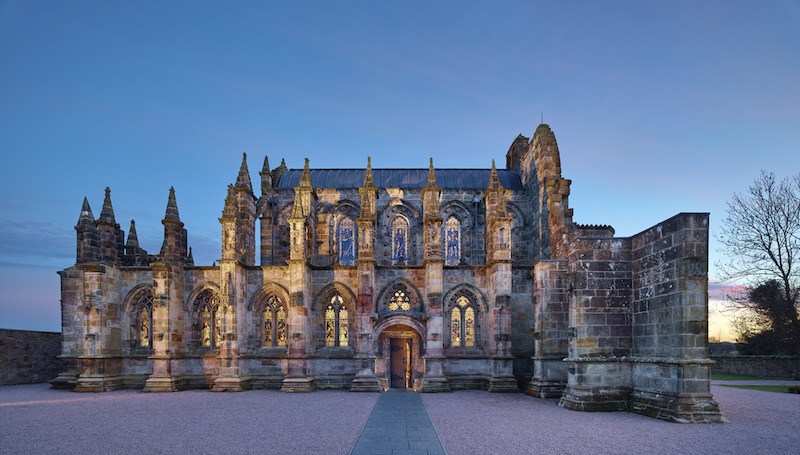As you may know already, modern-day/speculative Freemasonry (as it is known and practiced today across the world) comes from the ancient guilds of operative stonemasons.
Today, we’re taking a break from talking about Masonic history. Instead, we’re going to take a look at how the ancient stonemasons built the many architectural wonders and cathedrals that still stand today.
It seems we have lost our way in awe-inspiring architecture, maybe it’s time to bring it back?
NB: You can learn more about the origins of Freemasonry here.

Cathedral Building
Building a cathedral requires foresight. You need to think about ten years ahead before laying the foundation stone.
It is what is called the Cathedral Thinking. Flexibility is critical when coming up with the vision.
Cathedral architects need a brilliant foresight that looks at different scenarios going into the future. Planning must take into consideration the uncertainties of the future. Imagination is what drives all the architectural work.
Cathedral building breaks away from quarterly goals common to businesses. The process looks at the future generations and sets achievements that stand the test of time.
Constructing a masonic cathedral is an elaborate affair—building starts from the eastern end, the point where the mass takes place. The cathedral doesn’t require finishing, as soon as the first section is ready, it is consecrated and put to use immediately.
The next phase is the north to south transepts together with the side aisles and nave. Then nave is the central section that houses an entire congregation.
Because of the elaborate nature in the construction of a cathedral, completion may last 60 years when there is no shortage of funds.

The period may extend up to 200 years in instances where funding is not forthcoming. The pace of completion relies on the divine energy of the members.
Cathedral buildings require immense resources, skills, and expertise. The architectural designs show command and dedication to service. For the achievement of quality work, master masons take the lead.
The masters are highly skilled apprentices who later graduate to stone carvers. The designs are quite flexible but require approval from the Bishop. The construction isn’t a day’s exercise going by the level of geometry at play.
Masons know how to play around with shapes like circles, triangles, and squares that lead to unique patterns.
Sophistication is the norm for masonic patterns. A good example is one pattern displayed on most cathedrals that calculates the ratio of one to the square root of two.
How do you draw the sign?
- Start by drawing a square.
- Then strike a diagonal inside the square.
Do the math to ensure that the length/breadth of the square is proportionate relative to the ratio of one to the square root of two.
https://www.youtube.com/watch?v=WYdeeuS60-A
What about the ground plan of a Masonic cathedral?
The cloister is a perfect square where younger members study. The elderly also use the space to study. Based on geometry, the diagonal of the cloister equals the length of the nave.
Now use the nave length to draw a square and from that length create another square. Proceed to draw diagonal from the new square. The length of the diagonal you draw represents the entire length of the cathedral.
Ratios and proportions are top considerations in the design work.
A mixture of several designs evokes spiritual connection that also carries coded messages imprinted on medieval cathedrals. A number like 144 represents those saved at the time of revelation.
Building a cathedral is a highly coordinated activity. Master masons proceed to construct impossible structures that portray magnificence.
The Masonic Cathedral is a masterpiece featuring a combined effort of craftsmen and the master mason.
And because of the duration it takes to build a cathedral, the master mason may never live to see it to completion. But hope is what keeps the dream alive.
Often, the conditions for building aren’t ideal. It takes sweat and blood.
Mason’s high skills contribute immensely to the exercise. Medieval stonemasons are multi-talented; they are skilled in apprenticeship and technical skills.
A typical mason will perform different roles like design, architecture, crafts, building, and engineering.
Building an impossible structure like a cathedral takes a significant amount of time and effort. There is inevitable danger too. Most masons die in the course work, not because of old age but mainly from craft mishaps.
A builder could fall from a scaffolding, marking the end of their life. That was the case of Gerhard of Ryle, the master mason in the building of Cologne Cathedral in 1271.
In 1178, during an inspection tour, William of Sens had a similar fall but was lucky to survive, albeit with serious injuries.
But what is interesting about cathedral building is the sum of money paid for work done. The huge amount of money is an exciting incentive that matches the risk. Medieval masons have a sense of exceptionality.
For over 800 years, a cathedral built with stone and dedication will continue to serve its initial purpose. The opulence and strengths beat those of pyramids and castles by far.

Design
A blend of materials gives the cathedral the strength it deserves. Giant oak structures and unwavering stone pillars give it the true definition of robustness.
The classy floors match and outshine the structures of the 21st century. In many cathedrals, you will notice the mosaic floor designs at the ambulatory. The vibrant colors breathe life to the passageways.
On the southern end, the isle welcomes an elegant vault. The heights of every cathedral are so imposing, and some take the shape of the ordinary basilica church. The artwork features bronze blended with silver and gemstone.
Stained glass windows are another feature you won’t miss to find in a Masonic Cathedral. The rainbow color of glass evokes an emotional sense. There is a connection between these types of windows and Christianity.
Walls take the Romanesque structure, giving cathedrals a befitting finish. Wrought windows add to the overall strength as well.